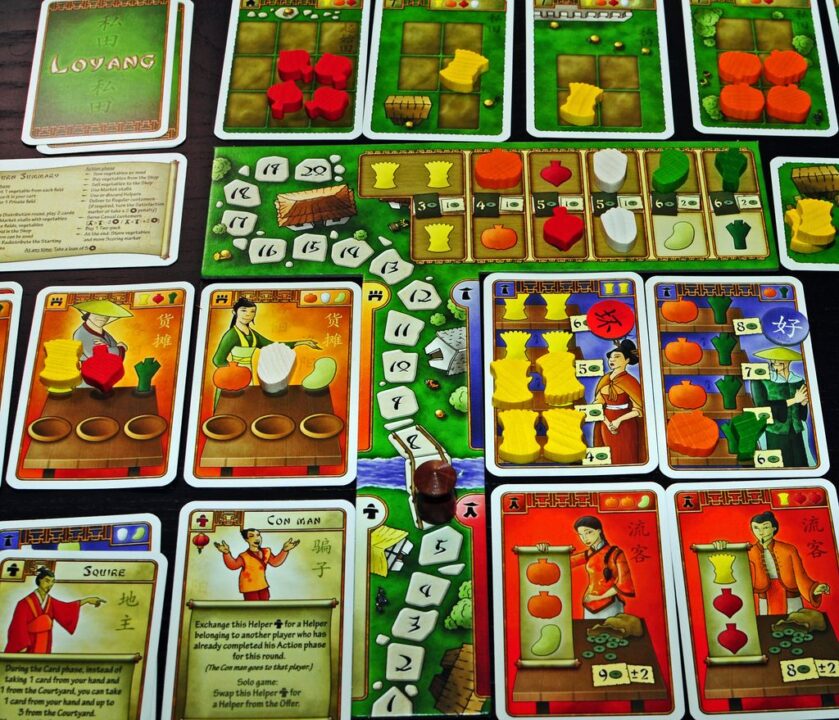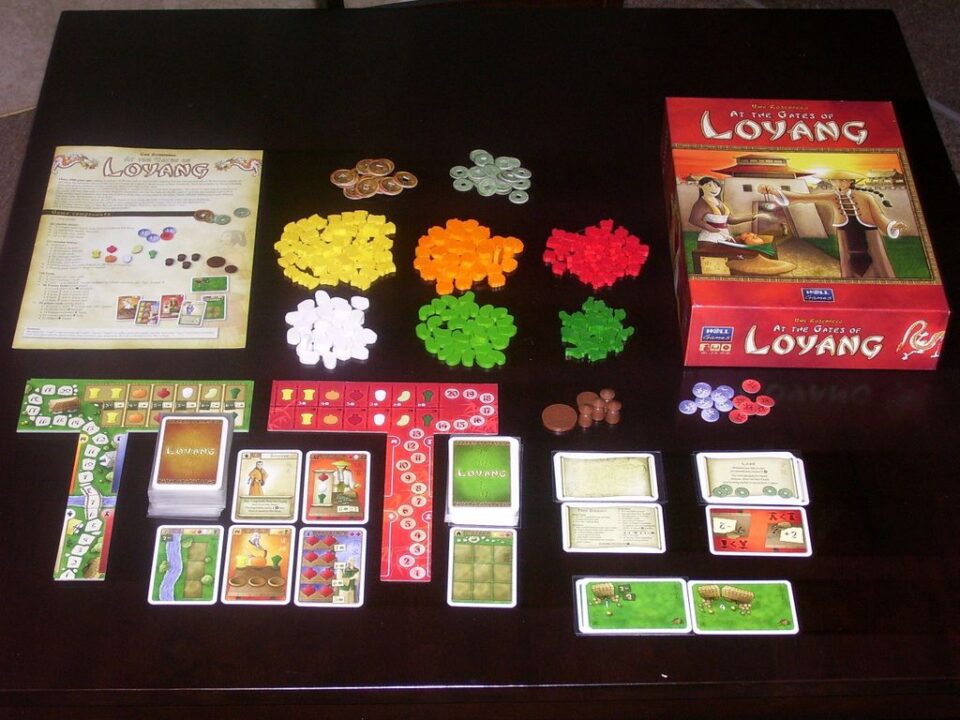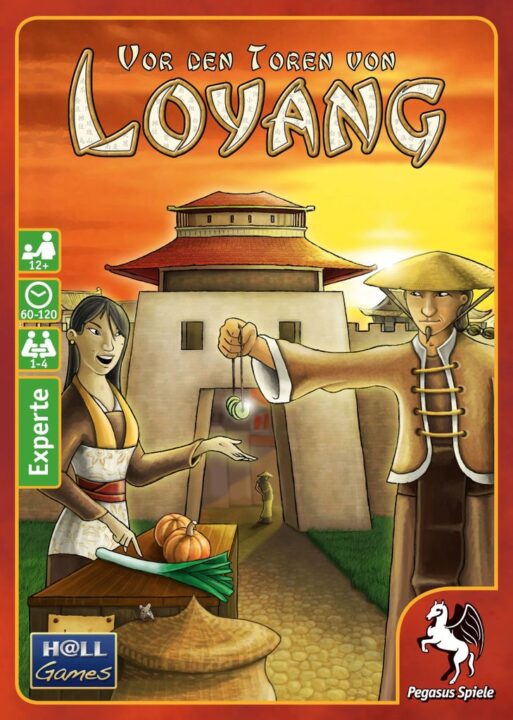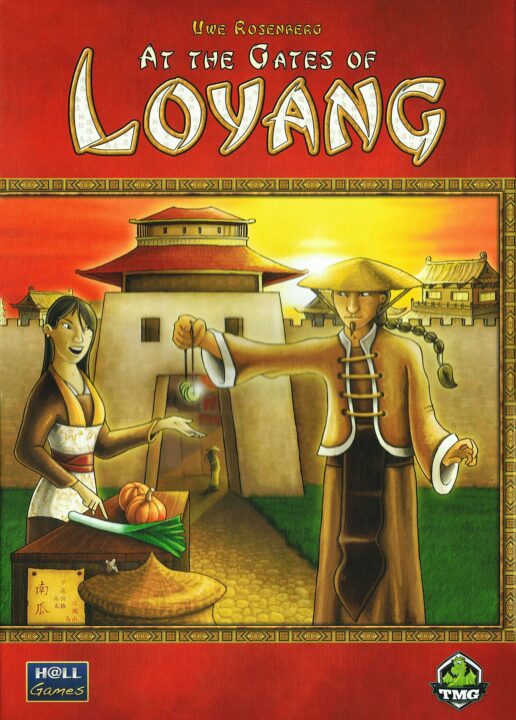Overview
Welcome to the whimsical fields of our latest board game review – ‘At the Gates of Loyang‘. Strategically sowing seeds of gaming wisdom, we will dive deep into the nuanced farming blend of mechanics and social encounters this game offers. In Loyang, whether you’re a steadfast solo player ploughing through personal growth, or revel in the spirited exchanges of multiplayer reclamations, there’s a rich landscape for you to harvest. So, get ready to cultivate your curiosity as we dig through the marvels and mishaps dug deep within the game’s roots, leaving no stone unturned and no strategy undiscovered.
How It Plays
At the Gates of Loyang is a board game promoting strategic resource management set in ancient China. It requires keen planning and adaptability in solo or group settings.
Setting Up
To set up, each player receives their own plot boards, showing private fields for vegetables. The shared game board depicts the public market spaces and harbors the card sequences for the game rounds.
Gameplay
Players spend game turns engaged in sequential phases where they plant vegetables, trade at the market, and assist customers. Meticulous planning underpins the interactions in selling harvested goods for coins.
Winning the Game
The ultimate goal is to progress along the Path of Prosperity. The player who most efficiently earns their wealth while satisfying customer orders clinches the victory.
Want to know more? Read our extensive strategy guide for At the Gates of Loyang.
Diving Deep into Resource Management
One of my most memorable games of At the Gates of Loyang genuinely showcased the importance of resource management. Each player starts out with a vision for their plot of land, but as the game unfolds, curveballs inevitably appear. Strategic Adaptation is key—do you pivot and sell odd vegetables to keep the money flowing, or double down on what your field yields? The finest moments arise when you successfully anticipate the market.
Market Prowess
The heart of the game lies in resource allocation: carefully selecting seeds, planning the harvest, and bartering in the market. Through trading, experimenting with unusual crop combinations has really turned the tables for me, making market savvy critical. Future Planning gets ignored at one’s peril; I’ve witnessed too many fall for the immediate gain instead of planting for the later rounds. So keep an eye to the horizon—those end-game points aren’t going to score themselves!
Next up, I’ll delve into the critical role that Player Interaction Mechanisms play in weaving the rich tapestry of the game.

The Connection Between Fields: Unveiling Player Interaction
Competitive Edge
During my countless evenings maneuvering through the rich fields of ‘At the Gates of Loyang’, one aspect particularly stood out — the subtle yet striking player interaction. Like tending to a delicate crop, we employed schemes anticipating our opponents’ actions. Subsequently, those satisfying moments of successful anticipation hint at the delightful competitive spirit present in each session.
Social Dynamic
Profitable harvests aside, trading among peers weaves a thread of camaraderie through the gameplay. Trading vegetables became more than just a mechanic; it evolved into a medium for lighthearted banter and strategy. The passing of cards between players underlines the importance of gauging your fellow farmer’s strategies. This dynamism plants seeds for negotiated alliances or silent vendettas that bloom beautifully on game nights.
Next, we’ll cultivate our understanding by comparing the serene solo experience with the variable climate of a multiplayer game in the next section.

A Tale of Two Experiences: Solo vs Multiplayer in Loyang
In At the Gates of Loyang, the solitary journey feels fundamentally different from the bustling multiplayer dynamic. During my quiet autumn evening plays, strategizing through the markets and fields alone offers a distinct, almost meditative challenge. Specific strategies can be honed without outside influence, allowing for deep strategic dives.
Singular Focus
When playing solo, every move feels surgical—a private puzzle demanding specific solutions tailored to personal tactics. It’s a cerebral moment-to-moment contest with oneself.
Communal Harvest
Conversely, setting the stage for multiple players turns the game into a lively exchange of both produce and playful banter. The mechanisms encourage light interaction that caters to competition and scarcity, thereby tilting the balance each round.
With these experiences in mind, does At the Gates of Loyang make the cut on my game shelf? Undoubtedly, yes—both solo and multiplayer harvests yield rich and rewarding gameplay that I wholeheartedly recommend.

Conclusion
As we conclude this review, ‘At the Gates of Loyang’ emerges as a robust game offering deep strategic depth balanced with intriguing player interaction. Whether orchestrating your farm in solitude or navigating through the bustling markets with friends, Loyang promises an engaging experience. Each playthrough invites a new mix of strategy and social dynamics, guaranteeing that no two games are alike. It’s a game I’ve appreciated more with each session, recognizing the subtle complexities that make it shine. Ultimately, Loyang is a game I’d recommend to any board gamer looking to cultivate their collection with a title that yields to repeated harvesting.


